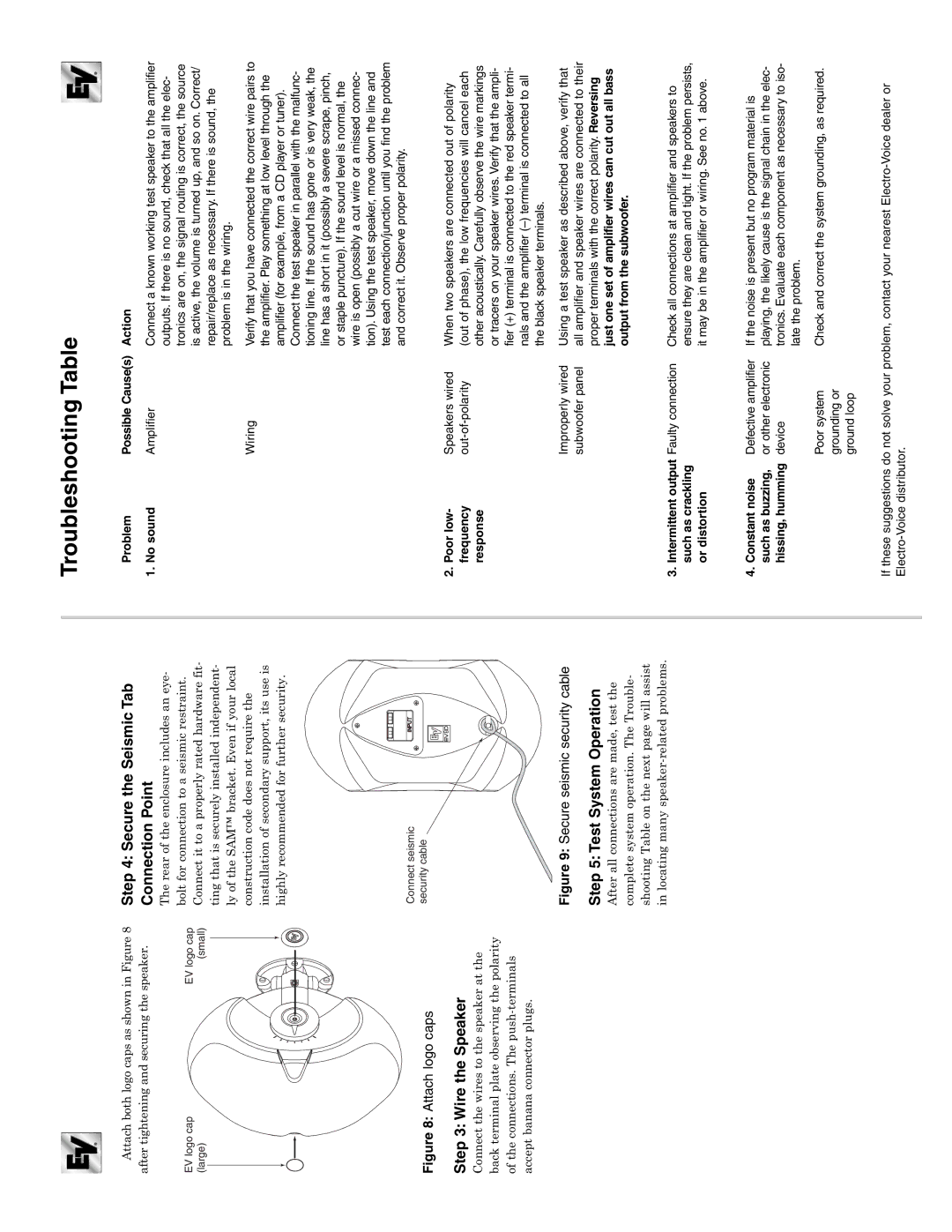SL6.2M specifications
The Electro-Voice SL6.2M is an advanced loudspeaker system that has been designed to deliver exceptional performance in a variety of environments, including live sound reinforcement, installations, and more. This model stands out in the Electro-Voice lineup due to its innovative design and robust features that cater to both professional audio engineers and casual users seeking high-quality sound reproduction.One of the most notable features of the SL6.2M is its dual 6.5-inch woofers, which are engineered to produce deep, rich bass and clear mids, ensuring a balanced sound across the frequency spectrum. The integration of a 1-inch titanium diaphragm compression driver further enhances this performance, delivering crisp highs that cut through even the most demanding audio environments. This full-range capability makes the SL6.2M an excellent choice for a variety of applications, from concerts to public speaking events.
The speaker’s unique design incorporates a highly efficient waveguide that improves sound dispersion and coverage. This technology allows for a wider listening area while minimizing distortion, providing consistent audio quality regardless of the listener’s position in the venue. The SL6.2M can be mounted in various configurations, thanks to its versatile mounting options. This feature enhances its adaptability, making it suitable for different setups, including wall-mount, pole-mount, and even suspended arrangements.
Another significant characteristic of the SL6.2M is its rugged construction. Built with high-quality materials, the speaker is designed to withstand the rigors of transport and installation. Its durable exterior not only protects the internal components but also features a sleek aesthetic that will fit seamlessly into any environment.
Additionally, the SL6.2M benefits from high power handling capabilities, allowing it to operate effectively even at high volume levels without compromising audio quality. The integrated crossover system optimizes the performance of each driver, ensuring that each frequency range is accurately reproduced.
In conclusion, the Electro-Voice SL6.2M is a powerful, versatile loudspeaker that combines advanced audio technologies with robust construction. Its quality sound reproduction, wide coverage, and adaptability make it an ideal choice for audio professionals and enthusiasts alike, setting a new standard for performance in the industry. Whether used in live events or permanent installations, the SL6.2M is engineered to deliver exceptional audio fidelity.

